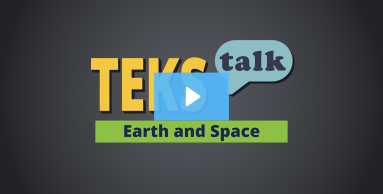Earth and space. The student knows that earth materials and products made from these materials are important to everyday life.
- Science
- Grade 1
- Earth and space

Earth and space. The student knows that earth materials and products made from these materials are important to everyday life.
Ask students to brainstorm a list of ways humans use fresh water and record their ideas on a class chart. Some examples students might generate include showering, brushing teeth, washing cars, drinking, washing dishes, or watering plants. Ask each student to think about ways they might conserve water when conducting each of those activities. Have each student write one to two sentences describing one way to conserve water. Some examples that students might generate include taking shorter showers, turning off the hose when not rinsing the car, or only running a full dishwasher.
Then ask students to pair up and share their ideas on how to conserve water with each other. After sharing, ask students to tape their idea to the class chart, next to the water use that it is related to. If students did not think of a way to conserve water for one of their initial water use ideas, brainstorm as a class to think of a solution.
Research
"Crawford, Elizabeth, and Thea Monison. “Drop by Drop: First Graders Learn About Water, Sanitation, and Conservation.” Social Studies and the Young Learner 24, no. 2 (2011): 9–13.
digitalcommons.longwood.edu/cgi/viewcontent.cgi?filename=0&article=1003&context=balancedliteracy&type=additional."
Summary: Students can be introduced to the concept of conservation using children's literature and have the class respond using writings and drawings. This article explains that water conservation can help reinforce other science, math, language, social studies, and life skills. Teachers should start with probing questions that activate students' prior knowledge to help students develop a personal response when teaching the importance of water conservation. The article proves some common misconceptions students have about clean drinking water and activities that can combat those misconceptions.